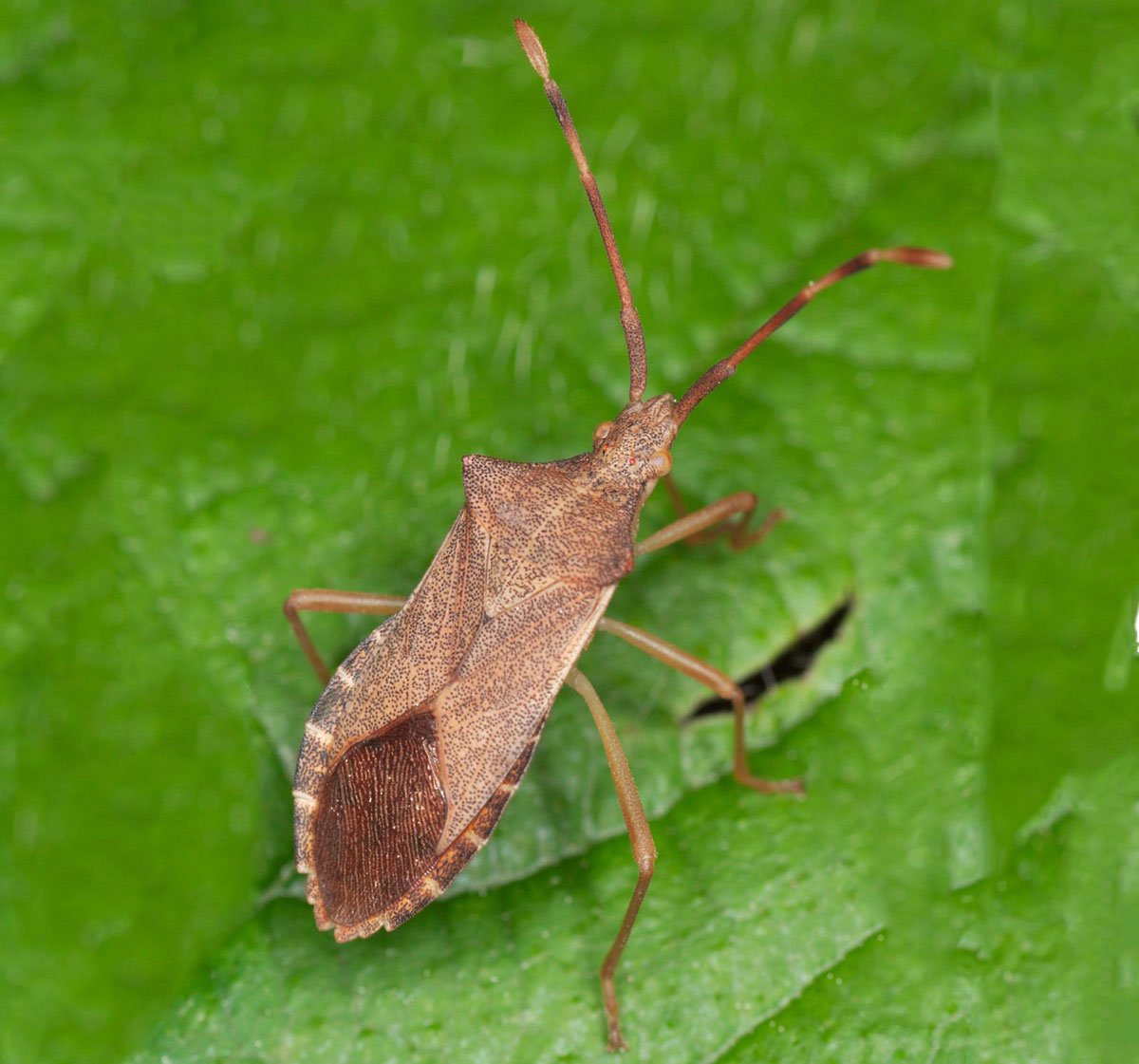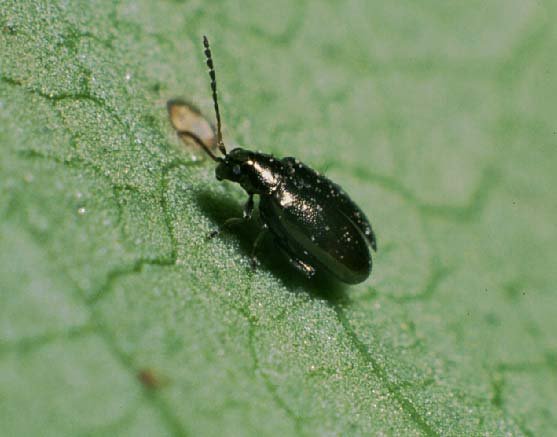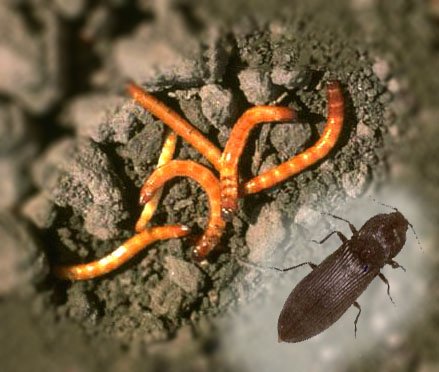Top 10 Vegetable Garden Pests in Dallas
Maintaining a thriving vegetable garden in Dallas, Texas is an incredibly challenging undertaking – and if successful can be immensely rewarding. Aside from the battle with crazy weather and terrible soil, garden pests are bountiful and you must be armed to face them head-on! Pests will wreak havoc on your precious plants, potentially diminishing if not eliminating your harvest. It can seem intimidating at first, but in this blog post, we will learn about the top 10 vegetable garden pests commonly encountered in the Dallas area, along with tips on how to identify and effectively treat them. Remember, early detection and intervention are key to preventing significant damage to your precious garden produce, and if you are proactive about it, you will be successful. Let's dig in!
APHIDS
Aphids are tiny, soft-bodied insects that come in colors such as green, black, or yellow. They are typically found on the undersides of leaves and new plant growth. Aphids suck the sap from plants, causing stunted growth and distorted leaves.
Identification
Clusters of small, pear-shaped insects or a sticky residue called honeydew on leaves.
Treatment:
A strong blast of water to dislodge aphids from plants.
Encourage natural predators like ladybugs and lacewings to control aphid populations.
Apply insecticidal soap or neem oil to affected plants, following the manufacturer's instructions.
TOMATO HORNWORMS
Tomato hornworms are large, green caterpillars with white diagonal stripes along their bodies. They primarily target tomato plants but can also infest peppers, eggplants, and other members of the nightshade family. Tomato hornworms devour leaves and fruit, leading to significant damage if left untreated.
Identification
Large green caterpillars with white diagonal stripes on the back.
Check for partially defoliated plants and dark green droppings (frass) on leaves.
Treatment:
Handpick tomato hornworms from plants and dispose of them. Chicken treat!
Encourage natural predators like parasitic wasps and birds.
Apply organic insecticides like Bacillus Thuringiensis (Bt) or spinosad, following the product's instructions. We like Captain Jack’s.
CABBAGE LOOPERS
Cabbage loopers are green caterpillars that feed on a wide range of vegetables, including cabbage, broccoli, and kale. They have a distinctive looping movement as they crawl and can quickly defoliate plants, causing significant damage.
Identification
Pale green small caterpillars with white stripes along their bodies.
They are between 1/8” to 1-1/2” in length.
Observe their characteristic looping movement when crawling.
Treatment:
Handpick cabbage loopers and drop them into a bucket of soapy water or feed them to your chickens!
Install floating row covers to prevent adult moths from laying eggs.
Apply organic insecticides like BT or spinosad, following the manufacturer's instructions.
SQUASH BUGS
Squash bugs are dark brown or grayish insects that attack squash, zucchini, and other members of the cucurbit family. Often mistaken for stink bugs, they do give off an odor when crushed, but are narrower and longer. They feed on plant sap, causing wilting, yellowing leaves, and fruit damage.
Identification:
Brownish or grayish bugs with a shield-shaped body and a distinctive odor when crushed.
Check the undersides of leaves for clusters of copper-colored eggs.
Treatment:
Handpick and destroy adult squash bugs and eggs!
For larger crops, you can use row covers to prevent squash bugs from accessing plants.
Apply insecticidal soap or pyrethrin-based insecticides following label instructions.
FLEA BEETLES
Tiny, black or bronze beetles that jump like fleas when disturbed. They attack a wide variety of vegetable plants, including eggplants, peppers, and radishes. Flea beetles chew small holes in leaves, giving them a "shot-hole" appearance.
Identification
Small 1/16”ish black or dark brown metallic beetles that jump when disturbed.
There are a few different varieties
Inspect leaves for tiny round holes or a lacy appearance.
Treatment:
Use floating row covers to prevent adult beetles from reaching plants.
Apply organic insecticides like spinosad or pyrethrin, following the product's instructions.
Companion planting with repellent herbs like basil or catnip can help deter flea beetles.
WHITE FLIES
Whiteflies are tiny, winged insects that suck plant sap, causing leaves to yellow, wither, and eventually die. They are commonly found on tomatoes, peppers, and many other vegetables.
Identification:
Tiny wings about 1/10-1/16 in long.
They have four broad, delicate wings that are held rooflike over the body and covered with a white powdery wax.
Treatment:
Encourage natural predators like lacewings and ladybugs and use sticky traps to monitor and control their population.
Insecticidal soaps or neem oil can also be effective against whiteflies.
CUTWORMS
Cutworms are nocturnal caterpillars that cut through stems of young seedlings near the soil surface, causing the plants to topple over.
Identification:
Different varieties of cutworms are similar in general appearance. They are smooth with very few hairs and can be as small as 1/2” and up to two inches when fully grown. They typically curl into a tight 'C' shape when disturbed. They can range in color from brown or tan to pink, green or gray and black.
Treatment:
Create protective collars around seedlings using cardboard or newspaper, or purchase ready made versions here!
Handpick the cutworms and destroy them (chickens again,) or apply beneficial nematodes to the soil for control.
COLORADO POTATO BEETLE
Colorado potato beetles are yellow-orange beetles with black stripes that feed on potato leaves, defoliating the plants.
Identification:
It is approximately 3/8 in long, with a bright yellow/orange body and five bold brown stripes along the length of each of its forewings. It can easily be confused with its close cousin and look-alike, the false potato beetle.
Treatment:
Handpick and destroy the beetles and their larvae.
Applying insecticides containing Spinosad or Neem Oil can also be effective against them.
Crop rotation and removal of plant debris after harvest can help reduce their populations.
SPIDER MITES
Spider mites are minuscule pests that suck the sap from plant leaves, causing yellowing, stippling, and webbing.
Identification:
Examine leaves closely for fine webbing and tiny mites. They are difficult to spot, so look for the webs first.
Treatment:
Increase humidity around plants and use water sprays to discourage their presence.
Insecticidal soaps or horticultural oils such as Neem Oil can be effective against spider mites.
Wireworms:
Wireworms are the larvae of click beetles that tunnel into the soil and feed on vegetable roots, causing stunted growth.
Identification:
Adult wireworms are slender, reddish brown to black click beetles that are 1/4 to 1/2 inch long. The larvae are what you are looking for - they are wirelike, having hard bodies that are slender, cylindrical, yellowish to brown in color, and about 3/4 inch long when full grown.
Treatment:
Avoid overwatering, as wireworms are attracted to moist soil.
Rotate crops and apply beneficial nematodes to control their population.
Tilling in fall can also expose wireworms to predators and environmental factors.
Conclusion:
By familiarizing yourself with the top 10 vegetable garden pests in Dallas, TX, and their identification and treatment methods, you can protect your garden from potential damage and utter failure!!
Remember, maintaining a healthy garden ecosystem, encouraging beneficial insects, and using environmentally friendly pest control methods are all essential for long-term success. Stay vigilant, act promptly, and enjoy the bountiful harvest from your vegetable garden!
(Note: The information provided is for informational purposes and contains specific regional advice. It is advisable to consult with local gardening authorities or extension services for the most accurate and up-to-date information in your area.)
References:
Texas A&M AgriLife Extension: "Aphids on Ornamental Plants": https://agrilifeextension.tamu.edu/library/landscaping/aphids-on-ornamental-plants/
Aggie Horticulture: "Aphids": https://aggie-horticulture.tamu.edu/galveston/beneficials/beneficial-37_aphids.htm
Texas A&M AgriLife Extension: "Tomato Hornworms": https://agrilifeextension.tamu.edu/library/landscaping/tomato-hornworm/
The Spruce: "How to Identify and Control Tomato Hornworms": https://www.thespruce.com/tomato-hornworm-identification-and-control-4109784
Texas A&M AgriLife Extension: "Flea Beetles": https://agrilifeextension.tamu.edu/library/landscaping/flea-beetles/
University of Maryland Extension: "Flea Beetles": https://extension.umd.edu/hgic/topics/flea-beetles-vegetables
Texas A&M AgriLife Extension: "Squash Bugs": https://agrilifeextension.tamu.edu/library/landscaping/squash-bugs/
Texas A&M AgriLife Extension: "Cabbage Loopers": https://agrilifeextension.tamu.edu/library/landscaping/cabbage-loopers/
University of California Statewide Integrated Pest Management Program: "Cabbage Looper": http://ipm.ucanr.edu/PMG/GARDEN/VEGES/PESTS/cabbageloopers.html
University of Minnesota Extension: "Squash Bugs": https://extension.umn.edu/yard-and-garden-insects/squash-bugs
University of Minnesota Extension - "Cutworms in Home Gardens" - https://extension.umn.edu/yard-and-garden-insects/cutworms-home-gardens
University of Massachusetts Amherst - "Colorado Potato Beetle"-https://ag.umass.edu/vegetable/fact-sheets/colorado-potato-beetle University of California
University of Florida IFAS Extension - "Whiteflies" - https://edis.ifas.ufl.edu/ig013
Agriculture and Natural Resources - "Spider Mites" - http://ipm.ucanr.edu/PMG/r116300211.html
University of Kentucky Entomology - "Wireworms" - https://entomology.ca.uky.edu/ef101
Note: The references provided above contain additional information and resources for a more comprehensive understanding of each pest and their management strategies.











